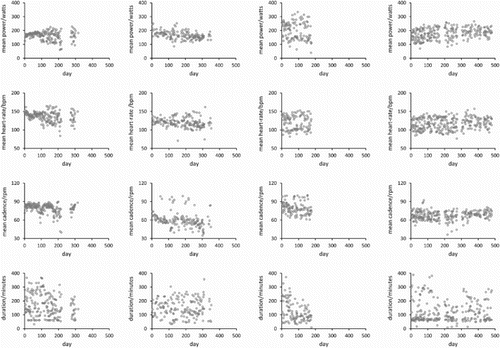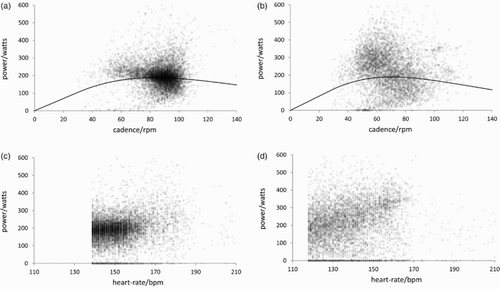Figures & data
Figure 1. Means for each training session for each rider. Rows correspond to power output (watts), heart-rate (bpm), cadence (rpm), and duration (minutes); columns corresponding to riders 1–4.

Figure 2. Power output (watts) vs. cadence (rpm) and heart-rate: (a,b) rider 1; (c,d) rider 2. Solid line: fitted, expected power output from the model equation (1) with heart-rate 151 bpm (rider 1), 139 bpm (rider 2); heart-rate lag 30 seconds.

